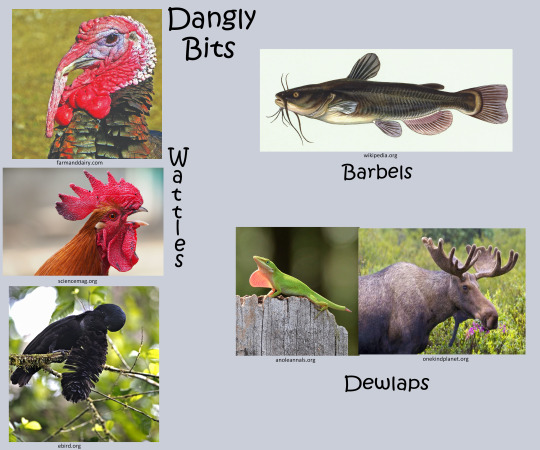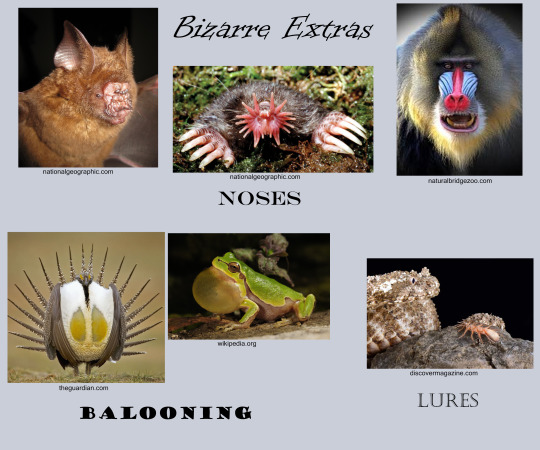#(( big predators.... if they dont have to expend energy they dont want to. like lions they just want to sleep in the sun
Explore tagged Tumblr posts
Text

@weavingroses inquired: 👀 ayo what merfolk would mer-brian be
(( “Grouper”, without a doubt. He’s one of the few other characters who I know INSTANTLY what species of mer he would be, and he’s just big, strong, and average enough for me to immediately assign him as “grouper”.
Which reminds me, I really need to get a better name for them than “groupers”. I always put them in quotes because, while the niche they evolved for ( low-lying coastal ambush predator who is too big to be bossed around by anything else ) is the same niche as groupers AND they have the brown-grey-black-yellow color pattern of some big groupers, I feel like it could mislead people into thinking that my merfolk all have one specific irl species that they’re based after. Which they aren’t, and it’s one of those tropes that REALLY grates on my nerves. I build my merfolk up for certain niches in certain environments, which is how actual evolution works, and there’s something just so uncanny in having this random fish-human hybrid that is ENTIRELY UNRELATED to this other species, even though they act very similarly, steal behavioral and physiological traits from each other, and look exactly alike down to some very fine details. Not to mention how people act like the human biology would have no part in it, nor would they ever consider how human biology conflicts with some given parts that the other included species have, because these traits don’t just exist in a vacuum and mashing them together like that provides a really bad idea of how biology works.
Basically, this is why I keep putting “grouper” mer in scare-quotes, and making a big point of, while these two different species may have converged on some similar solutions to similar environmental pressures because they occupy a similar niche, they are not the same thing and should not be thought of as the same thing. Kinda the difference between mistaking one of them for the other from a distance, and copy-pasting anatomy.
Anyhow, there’s not much to say about the “groupers”, really? That’s why I’d pin Brian as one of them — since my rule for undead is to just treat them as their living counterparts to figure out what mer species they would be. Since Brian would essentially be Some Guy, albeit a very big Some Guy, he gets “grouper”, where the weirdest thing about them is that they’re one of the few mer species with slit pupils, and that they’re actually the most related species to Abyssals. Both them and the Abyssals are the most basal of all the species of merfolk, with their very small upper tail fluke, non-fused earfins, and heavy outer scale coating — but in terms of social conditions inside of the Merkingdom, the Merkingdom has had “groupers” inside of it since long before it became the modern Merkingdom, and they don’t really hold any kind of special social position. Some of them got grandfathered into some very nice positions as Royals, but usually not much mind is given to them.
#Most secret royal advisor || OOC#Dreaded rumors || Asks#weavingroses#(( and watch as i pause in the middle of this ask to go on a tangent abt mer-media#(( THAT ONE THING. BOTHERS ME SO BADLY.#(( I KIND OF HATE IT!!!!! A LOT!!!!! DOESNT MAKE ANY SENSE TO ME!!!#(( also yes groupers are lazy bastards who would very much like to sleep all day but. thats a universal mer trait.#(( big predators.... if they dont have to expend energy they dont want to. like lions they just want to sleep in the sun#(( which has fun and interesting consequences when it comes to how that interfaces with the merkingdom and their goals
1 note
·
View note
Text
Real World Inspiration
for additional physical features you can add to dragons! (previous post was an edit of the D&D black dragon. Next post will be some examples of dragon designs I made.)
The classic european dragon design used in a lot of mainstream fantasy is already kind of a mashup of many different animal features. Bat wings, long swan-like neck, lizard scales and tail, feet that look like reptilian lion feet or bird of prey talons, heads that are partway between a horse and a crocodile, horns like a goat or ram. They’re chimeric and that’s fun to work with. But they do often end up being mostly just big scales, a pair of horns, and then a lot of random spikes. And that’s fine, but there are so many weird physical structures that exist on real world animals which could easily be used on dragons. Let’s look at them in a series of specific categories.
(Under a cut cuz it got so very very long sorry)

(Description: a collage titled "spikes", showing real world animals with lots of spiky structures on their bodies. Photos of an iguana and a crocodile are labeled "osteoderms". A photo of an echidna is labeled "modified hair". And a photo of an inflated porcupine fish is labeled "modified scales". End description.)
Since dragons are usually depicted as reptilians, osteoderms and modified scales would be the most common way to add lots of spikes in a realistic manner. Iguanas have a whole crest of tall osteoderms on their spines, and the bumps all along a crocodile's back are also osteoderms.
Osteoderm means "bone skin" and they're basically just calcified skin deposits. Boney, but lightweight, not as sturdy as bones, and not at all connected to the skeleton. Armadillo armor is also a form of osteoderm.
Scales are made of a similar material to fingernails, hair, and feathers, and sometimes they get really spiky without necessarily including osteoderm structures. I used a porcupine fish for that but it turns out science is uncertain what their spines actually are. The thorny devil lizard is a good example though, that thing is nothing but spiky scales (even its big facial horns have no bone underneath)
And of course things like echidna, porcupines, and hedgehogs are covered in spikes that are just really thick sturdy hairs. Evolution is bizarre.
And those are all very effective ways to put lots of spikes on a dragon without adding extra weight from bone spikes that emerge from the skeleton.

(Description: a photo collage titled "dangly bits" showing several animals that have extra flesh hanging from parts of their bodies. Photos of a turkey, rooster, and long wattled umbrella bird are labeled "wattles". A photo of an anole lizard showing its throat display and a photo of a moose are labeled "dewlaps". And a drawing of a catfish is labeled "barbels". End description.)
Wattles are pretty common in many bird species. Extra neck flesh that usually starts by the jaw and may be connected further along the neck but doesnt have to be. The umbrella bird here has a retractable wattle covered in feathers which it can move to make it look like it has a very long pinecone hanging off its neck. I love how weird it is.
A similar structure is the dewlap, which can be found on lizards like anoles and iguanas, but can also be found in birds and even mammals. It's a fleshy protrusion from the neck which can be small and dangly or rather large. Sometimes it's ts flat, but sometimes it's chubby, like on some rabbits.]
And of course we have catfish barbels, which are like thick fleshy whiskers. Lots of asian dragon depictions include barbels because they take inspiration from carp, like the koi fish.

(Description: a collage titled "frills" showing animals which have various flaring body parts. Photos of a frilled lizard, a chameleon, and a photo collection of birds I couldn't identify, are labeled "crests". Photos of a betta fish, a black bass, and a lionfish, are labeled "fins". End description.)
I'm not sure the frilled lizard counts as having a crest but I had to include it somewhere. I did not look hard enough to learn exactly how it raises its frill, but I did find that the frill only has two very thin bones in it, right by the jaw. The rest is just really precise musculature I guess.
Chameleon crests are built on bone structures, like the ceratopsian dinosaurs bony neck frills. And of course, there are countless bird species that have feathery crests of all forms.
I know I said on my posts correcting official dnd dragons that I disliked the neck fins on those, but fins can look like that with sturdy points and scalloped edges. I just dont like the way they're usually drawn on dragons, with a singular lonely neck fin that has thick bones in it. It would be much more fun if it was accompanied by other fin structures to create a more cohesive creature. May as well go all the way if you're going to add any frill, right?

(Description: a collage titled "bizarre extras" showing animals that have really weird and unique physical features. Photos of a bat, a star nosed mole, and a mandril, are labeled "noses". Photos of a sage rouse's mating display and a frog's vocal sac are labeled "ballooning". And a photo of the spider tailed viper is labeled "lures". End description.)
This is the section for the weird miscellaneous stuff I basically never see in dragon art. Which is a shame because the real world is full of the weirdest creatures. Weird noses serve purposes by interacting with scent in complex ways, or in the mandril's case, being a point of display. Noses with weird structures can also create different noises for communication.
Lots of creatures have ballooning display structures. Usually for the purposes of attracting a mate and competing for territory. Sage grouses, prairie chickens, frigate birds, and of course frogs, all have weird throat structures they can inflate for communication, attraction, and intimidation. Dragons could even use it as part of their breath weapons. Why not have an extra sac in the throat to carry a special gas or something?
And lures! Angler fish, snapping turtles with tongues that look like worms, and this absolutely bizarre snake that has evolved modified scales on the tip of its tail to resemble a spider. Many animals use specially adapted body parts to lure prey, which then allows them to hunt without expending too much energy. Being a predator is hard work, and most predators will back away from a fight because they do not want to spend the energy or risk injury when they can find an easier target.
Dragons are huge! They must need so much meat to maintain their energy stores. I think it's sensible for some dragons to live quietly, spending as little energy as possible while they use adapted body parts to lure prey. A dragon in a cave with a modified tail that resembles treasure? A green dragon disguised as a small hill in a field with a long tongue that resembles a delectable plant to lure in cattle? Dragons in dark environments with bioluminescent lures? I know big dramatic dragon battles are fun, but this is just such a good concept I'm sad I don't really see it used.
Anyway theres a lot of real world physical features that I think could be used on dragons more. My method of finding interesting and unique ideas for dragons is usually to just google "weird/cool (insert animal here)".
67 notes
·
View notes